Photos show the explosive, violent tension between Spain and Catalonia’s separatists right now
Yesterday (March 23), Spain’s Supreme Court ruled that 25 leaders of the autonomous region of Catalonia should be tried for rebellion, embezzlement, or disobeying the state. Some of them have already been detained and held without bail pending trial. If convicted, they face 30 years in jail.
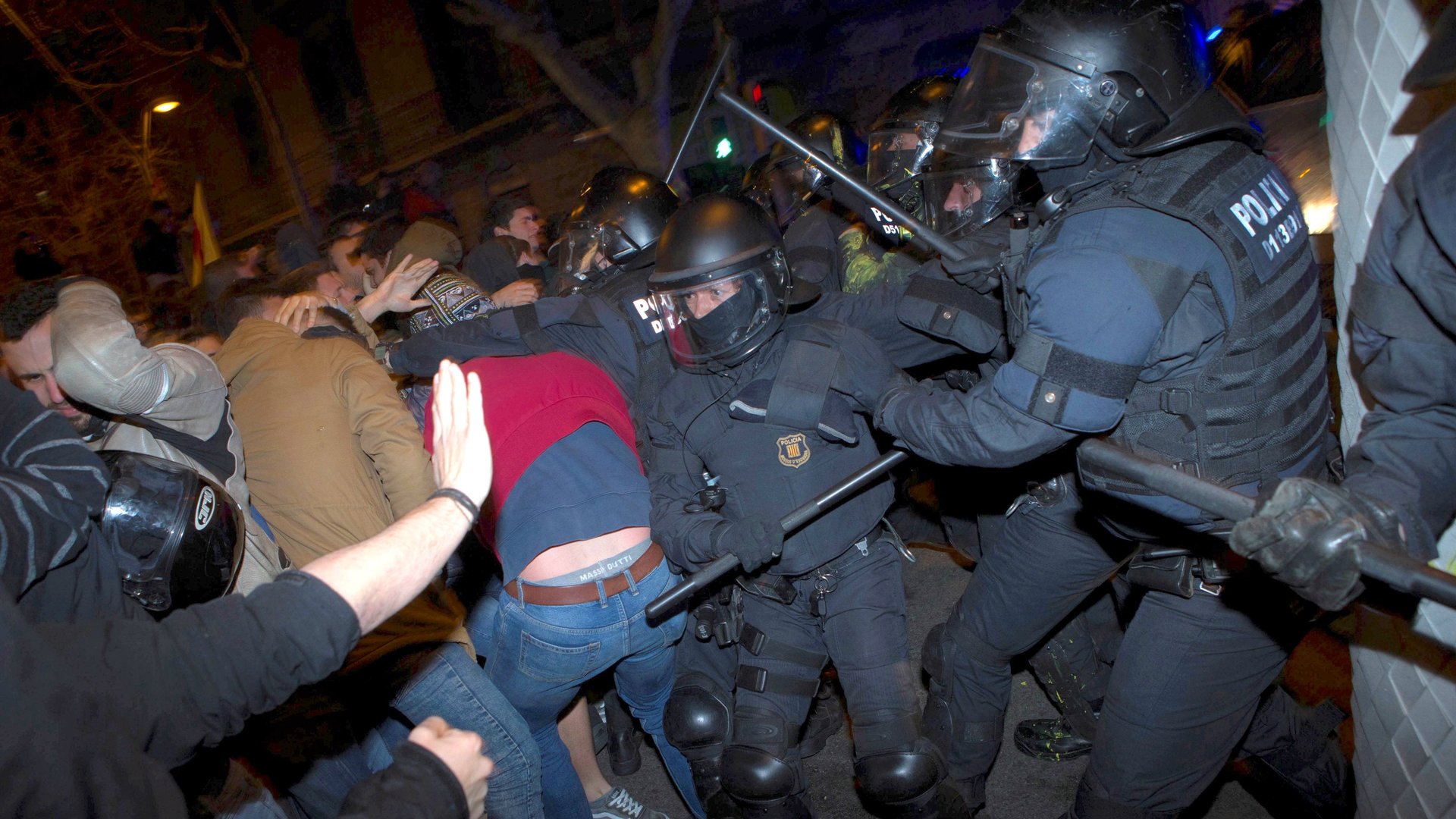

Yesterday (March 23), Spain’s Supreme Court ruled that 25 leaders of the autonomous region of Catalonia should be tried for rebellion, embezzlement, or disobeying the state. Some of them have already been detained and held without bail pending trial. If convicted, they face 30 years in jail.
That harsh judgment led crowds of protesters to gather around Spanish government buildings in Barcelona as well as other parts of the region.
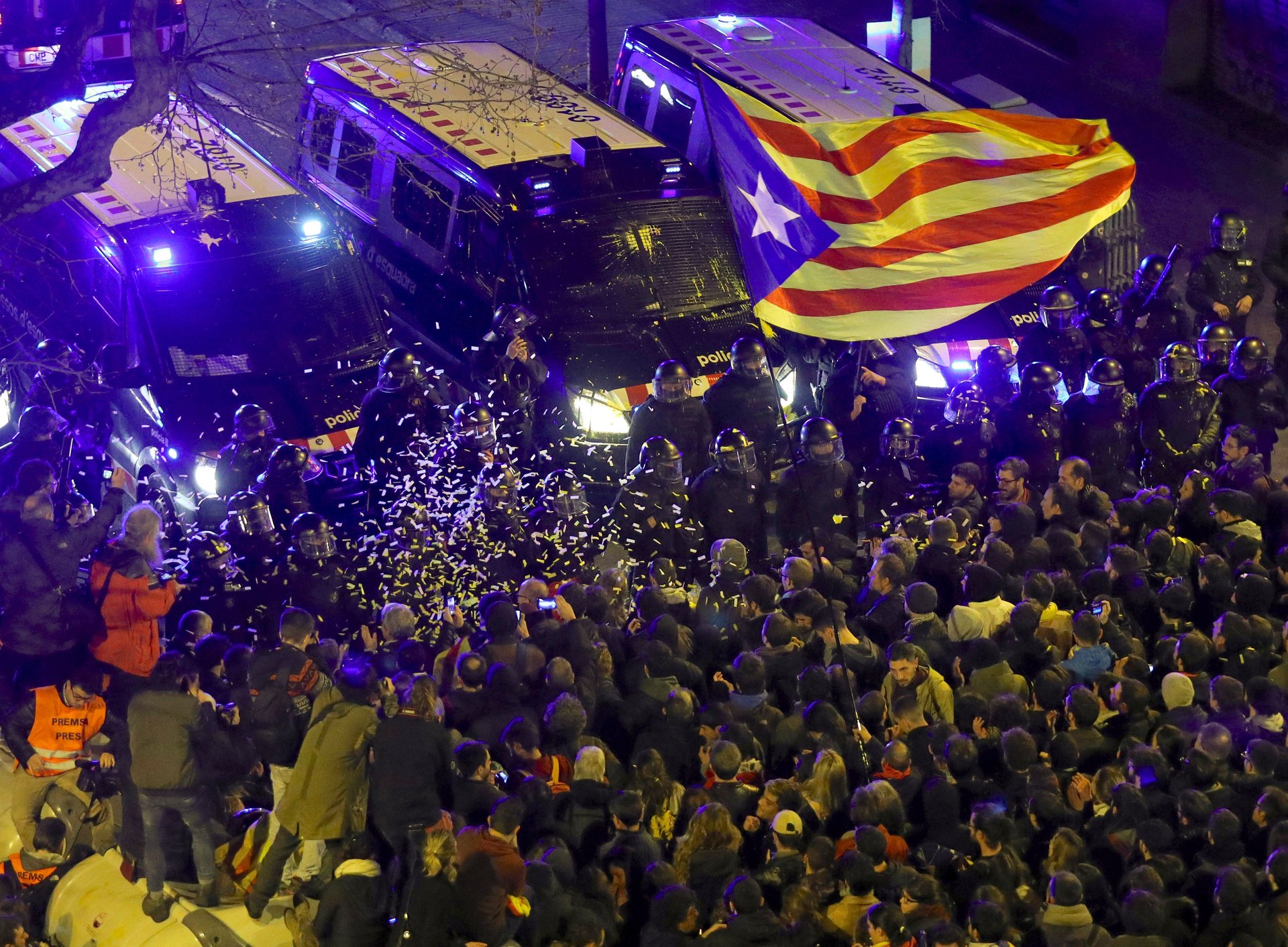
Some members of the crowd burned pictures of the Supreme Court judge Pablo Llarena and of Spain’s King Felipe.
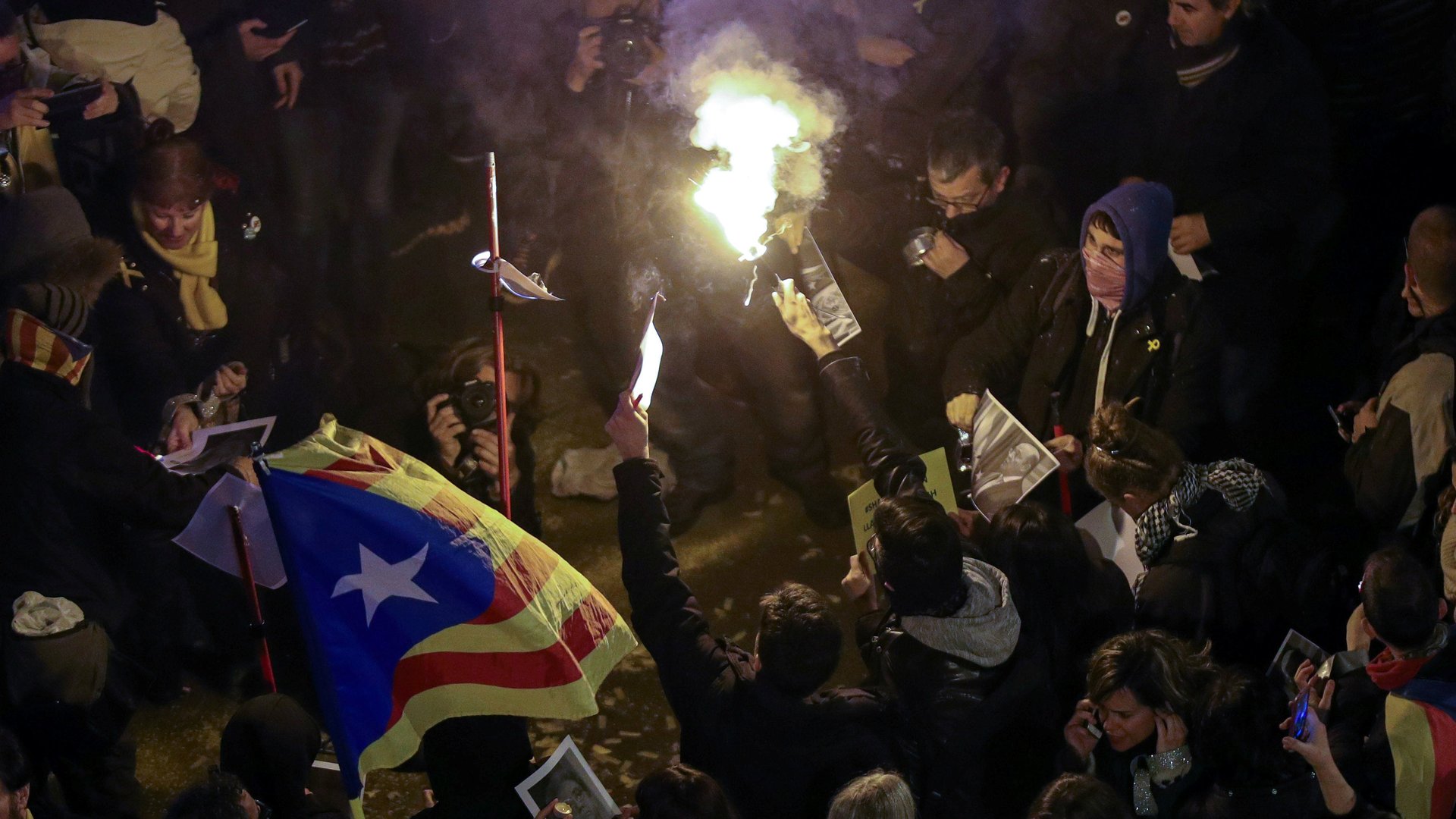
Protestors tried to break through police lines. Riot police forced them back.
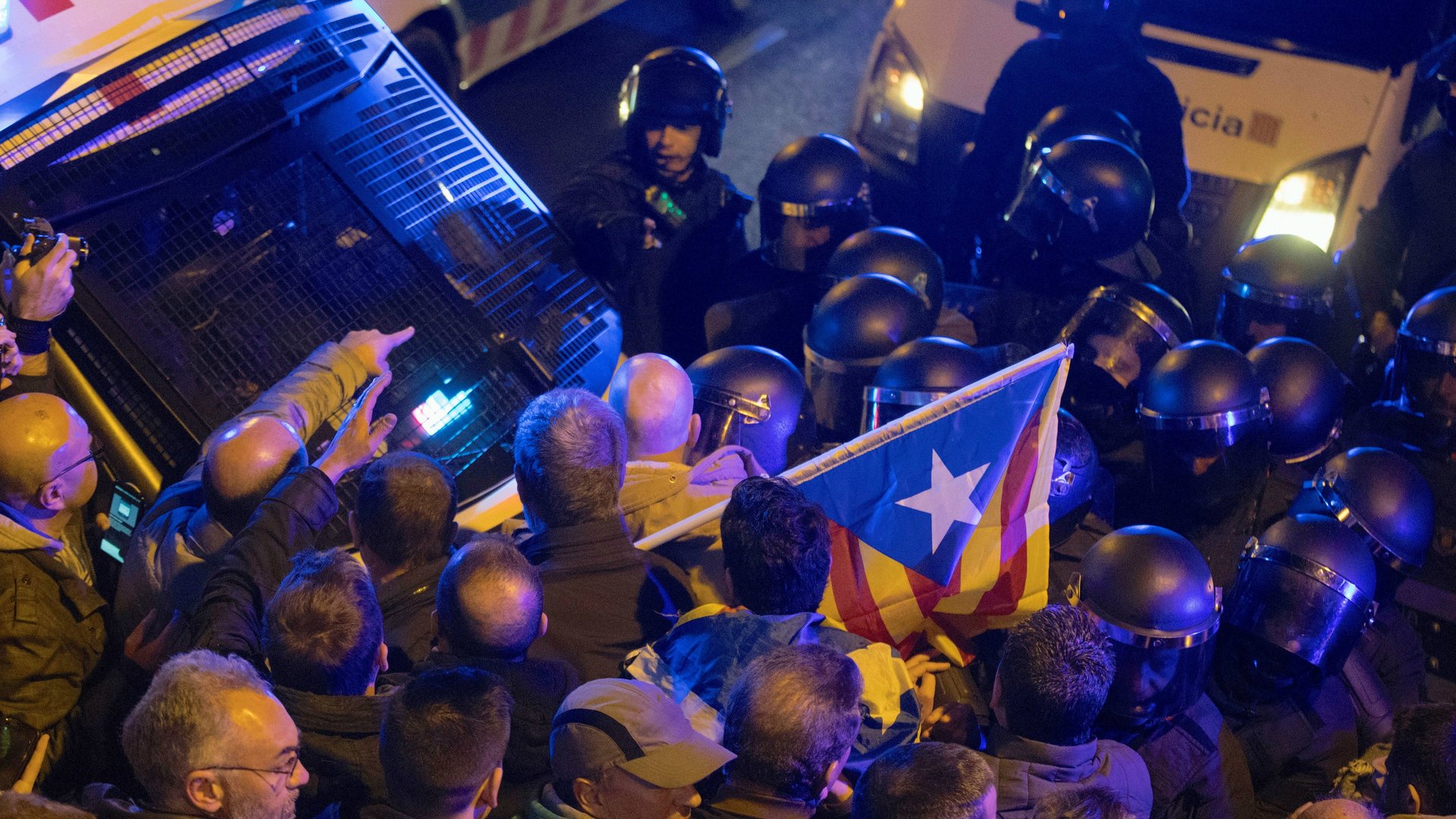
At least 20 people were injured as police used riot batons to keep protesters away.
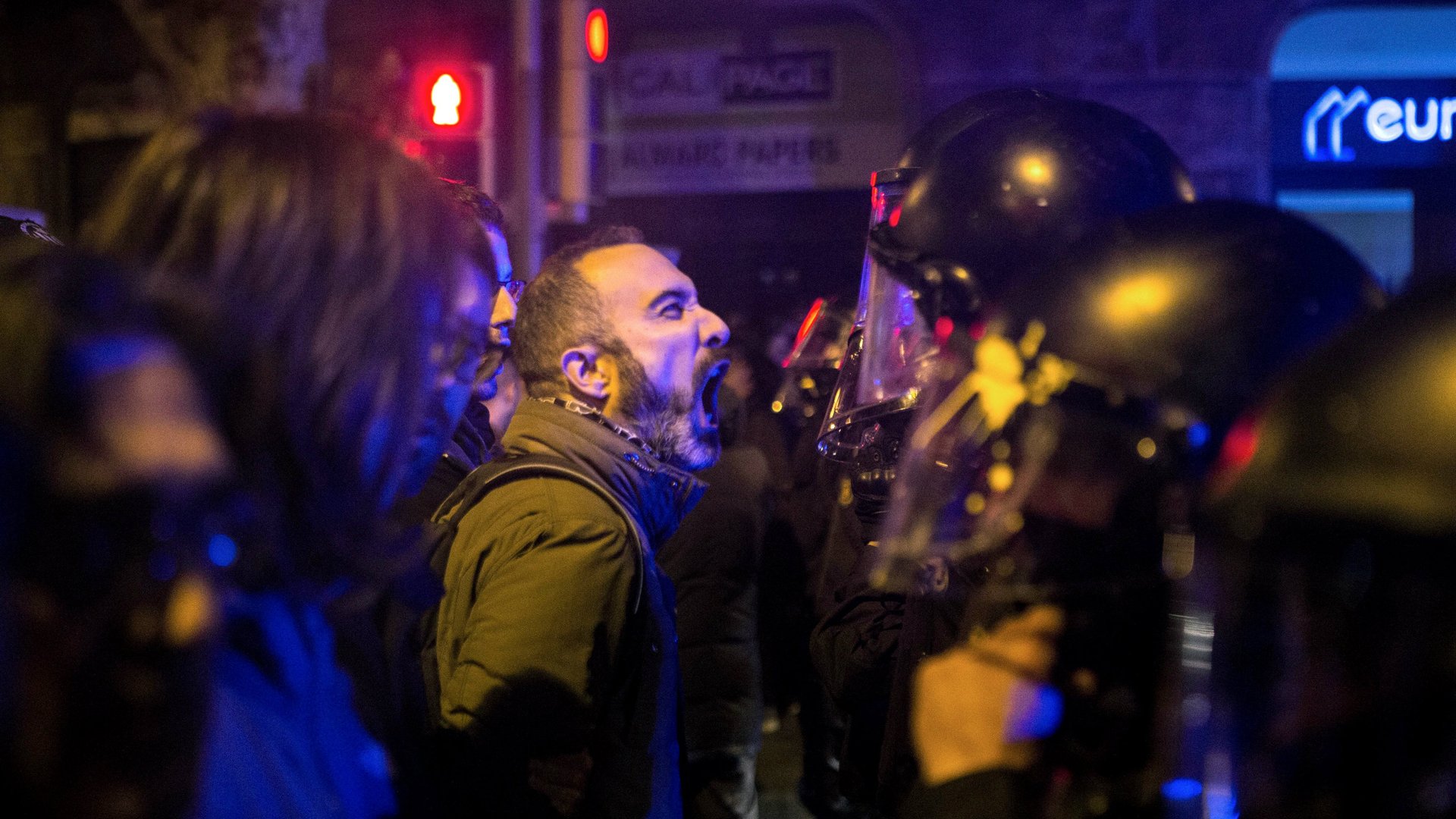
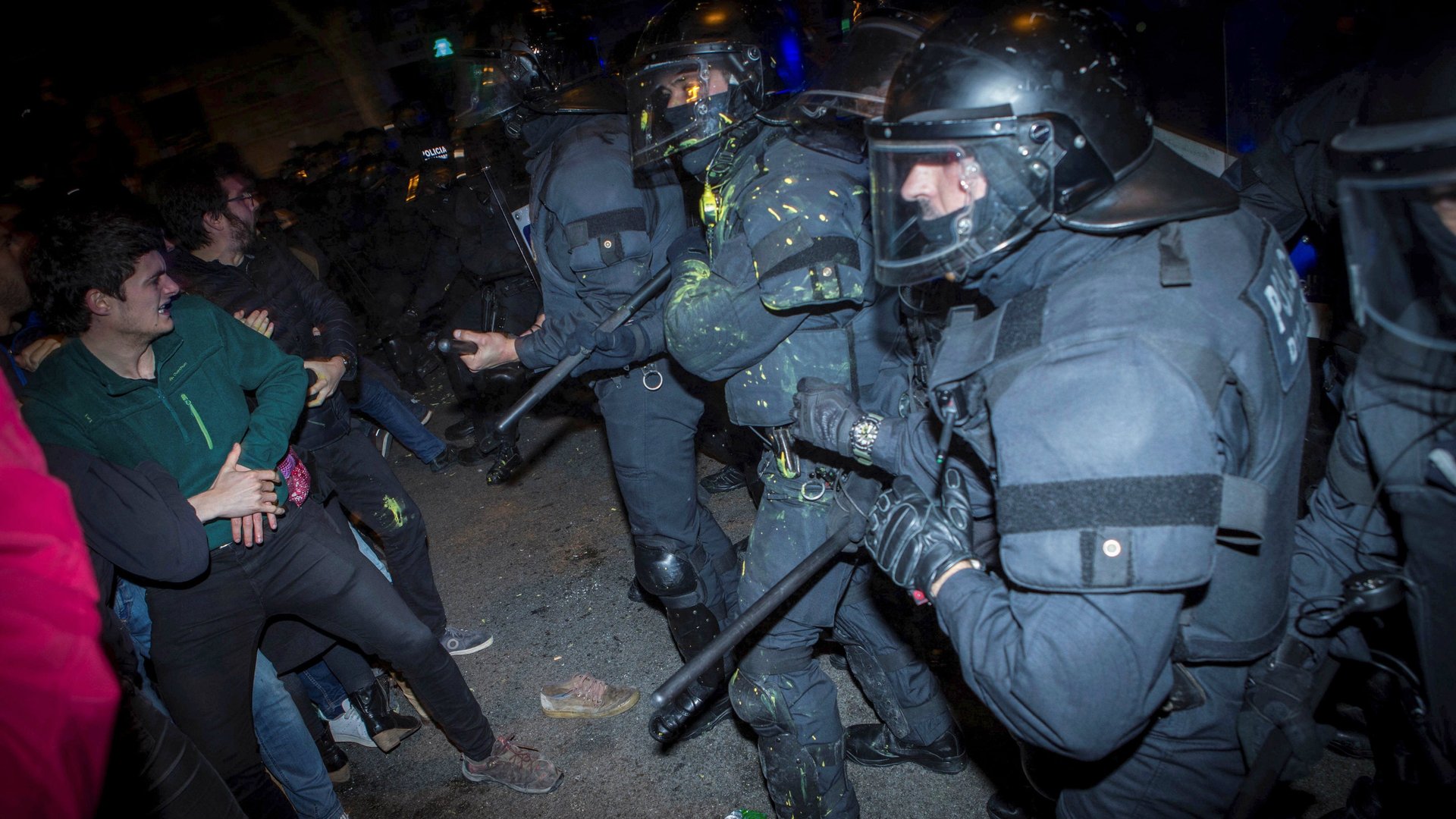
Other protestors set fire to garbage cans.
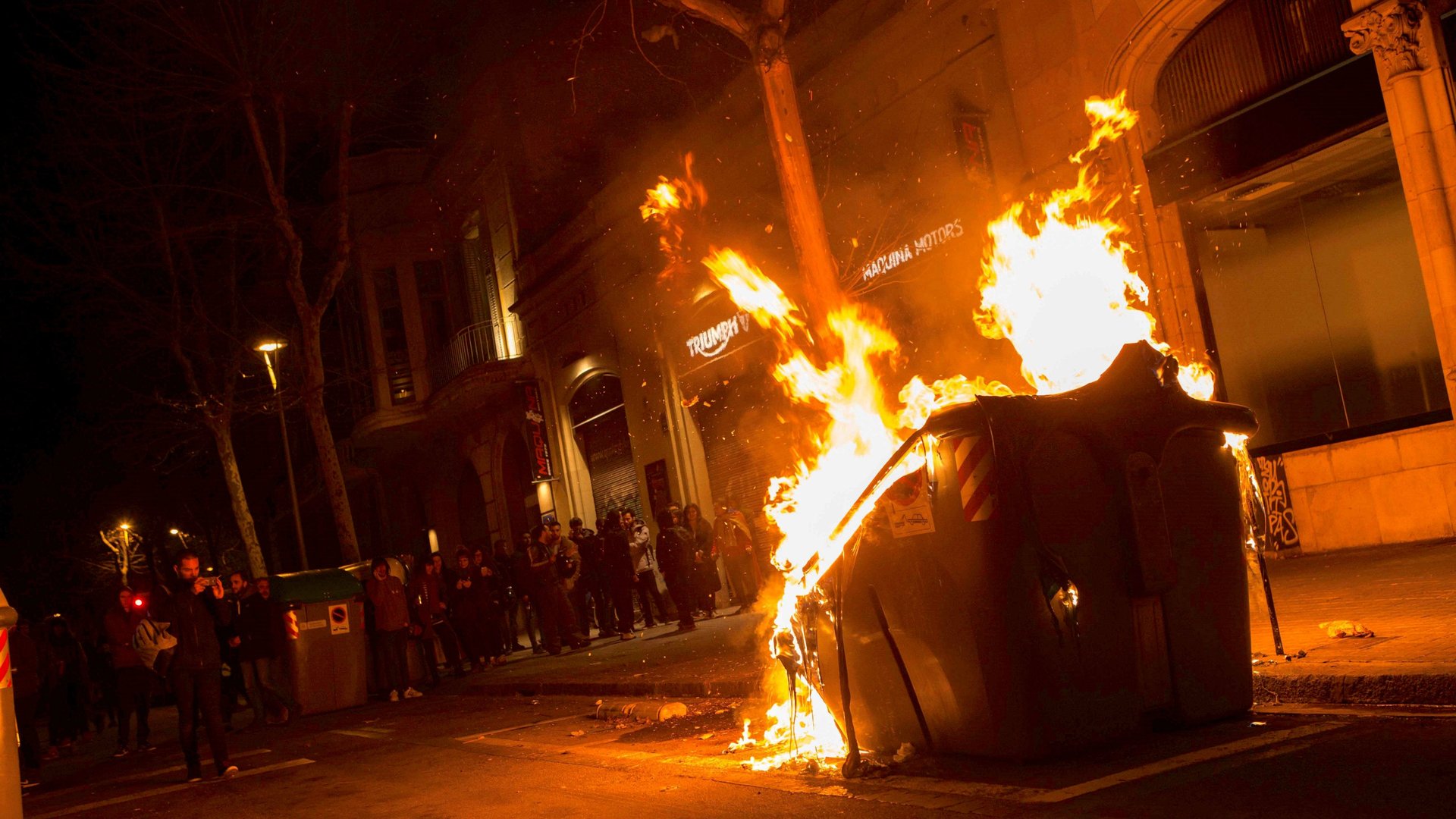
Catalonia has a long history of trying to break away from Spain.
Economic hardship beginning in 2008 exacerbated historical grievances, as Spain’s severe credit crisis, billion-euro bank bailout, and soaring unemployment catalyzed independence movements once again. Around 80% of people in the region opted for independence in an informal vote (a “participation process”) in 2014, although turnout was low. In December, less than three months after Catalonia’s “illegal” referendum which leaders of the autonomous claim resulted in a vote for independence, Catalonia’s parliamentary election exposed how divided the region is on independence.
Since then, Spain’s government has increased efforts to put Catalan leaders on trial and quashed moves that would separate Catalonia from the rest of the country.